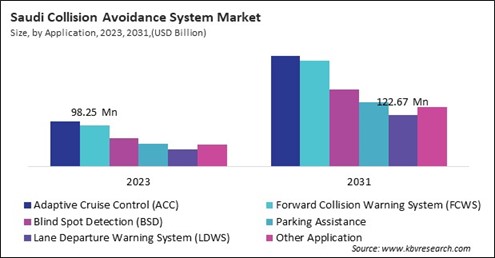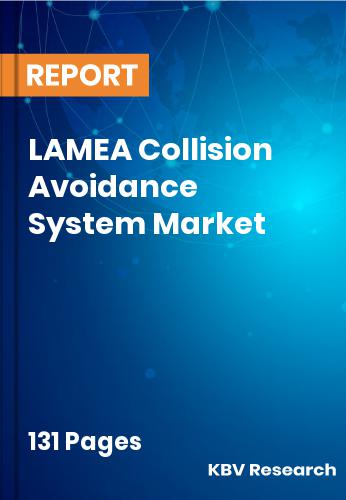The Latin America, Middle East and Africa Collision Avoidance System Market would witness market growth of 12.6% CAGR during the forecast period (2024-2031).
The Brazil market dominated the LAMEA Collision Avoidance System Market by Country in 2023, and would continue to be a dominant market till 2031; thereby, achieving a market value of $3,407.6 million by 2031. The Argentina market is showcasing a CAGR of 14.1% during (2024 - 2031). Additionally, The UAE market would register a CAGR of 11.5% during (2024 - 2031).

Industries such as mining, construction, warehousing, and logistics utilize collision avoidance technologies to enhance workplace safety. Heavy machinery, including forklifts, cranes, and bulldozers, are equipped with sensor-based anti-collision systems to detect nearby obstacles, workers, and other vehicles. These technologies significantly reduce accident risks, improve productivity, and comply with workplace safety regulations.
Autonomous robots and Autonomous Mobile Robots (AMRs) rely heavily on collision detection technologies to navigate complex environments safely. Drones, warehouse robots, and AI-powered delivery robots use a combination of LiDAR, radar, and vision-based systems to detect and avoid obstacles in real-time. With the increasing adoption of automation in logistics, healthcare, and manufacturing, collision avoidance technologies are crucial in enabling safe and efficient robotic operations.
The market is growing rapidly, with investments in autonomous transportation, infrastructure development, and automotive safety technologies all contributing to this. Dubai’s ambitious Autonomous Transportation Strategy aims to have 25% of all transportation in the Emirates fully autonomous by 2030. Advanced systems will be necessary to guarantee passenger safety in the context of the Dubai Roads and Transport Authority's (RTA) initiative to deploy 4,000 autonomous taxis and buses. Saudi Arabia’s large-scale investment of $147 billion in its transport and logistics sector by 2030, along with a dedicated allocation of $9.06 billion in its 2023 budget for infrastructure and transportation, is set to drive the adoption of collision avoidance systems. Brazil’s auto parts industry is experiencing a surge in investment, with the Brazilian Association of the Auto Parts Industry (Sindipecas) increasing its investment forecast from 2% to 5%, reaching $1.25 billion in 2024. In conclusion, advancements in Dubai’s autonomous transportation, Saudi Arabia’s infrastructure investments, and Brazil’s expanding auto parts industry are driving market growth.
Free Valuable Insights: The Worldwide Collision Avoidance System Market is Projected to reach USD 160.86 Billion by 2031, at a CAGR of 11.0%
Based on Technology, the market is segmented into Radar, Camera, Ultrasound, and LiDAR. Based on Application, the market is segmented into Adaptive Cruise Control (ACC), Forward Collision Warning System (FCWS), Blind Spot Detection (BSD), Parking Assistance, Lane Departure Warning System (LDWS), and Other Application. Based on countries, the market is segmented into Brazil, Argentina, UAE, Saudi Arabia, South Africa, Nigeria, and Rest of LAMEA.
By Technology
By Application
By Country
Our team of dedicated experts can provide you with attractive expansion opportunities for your business.

